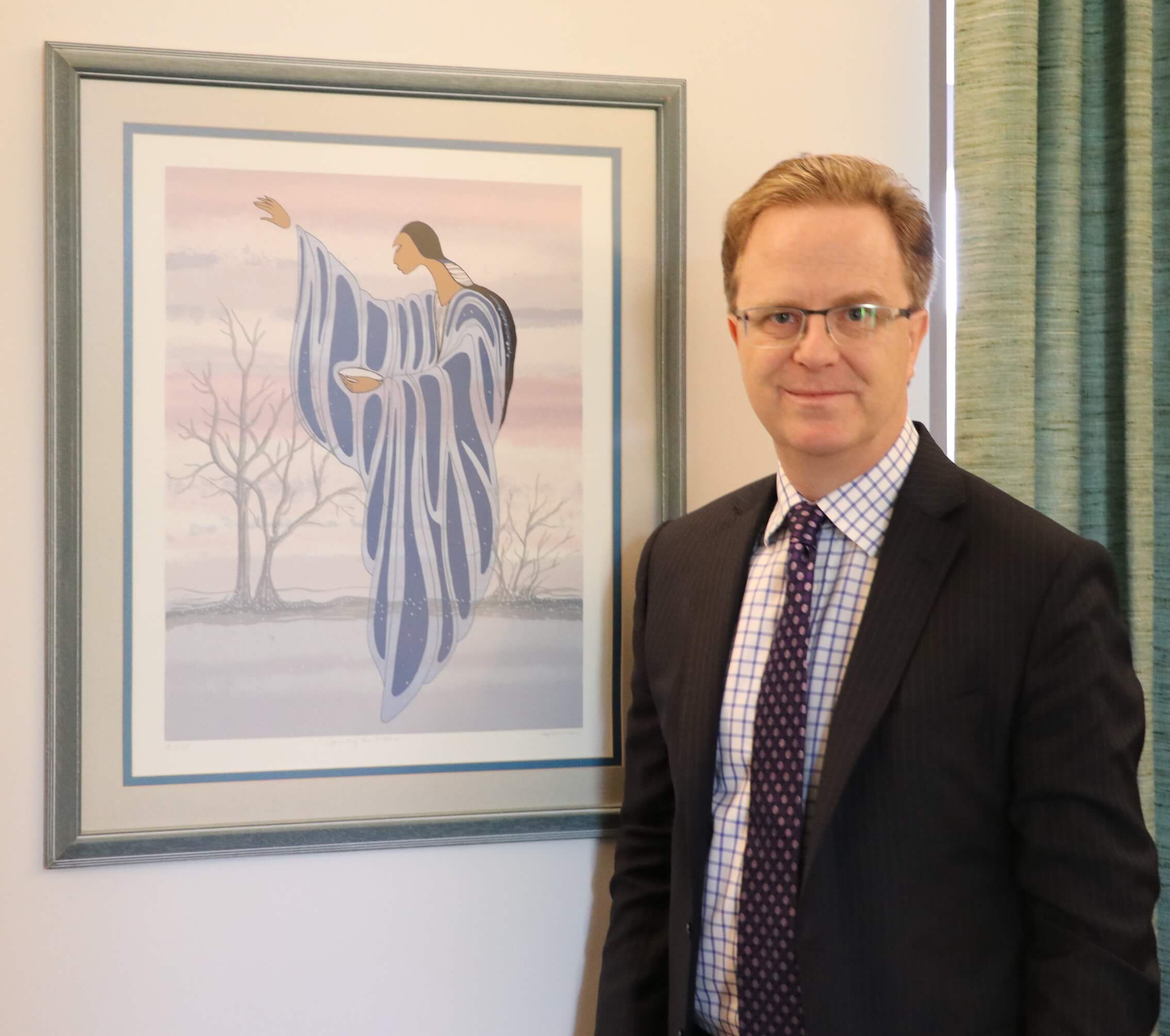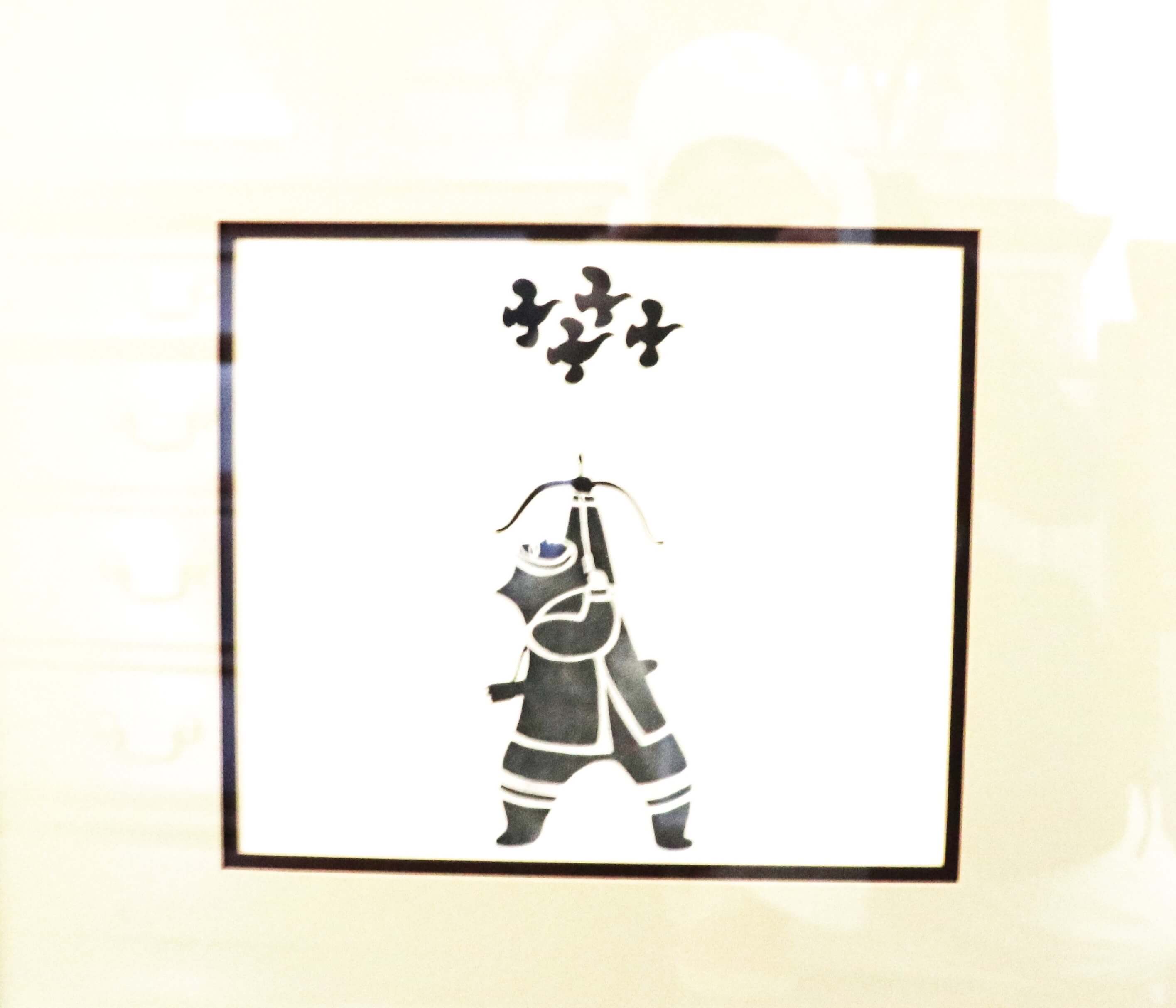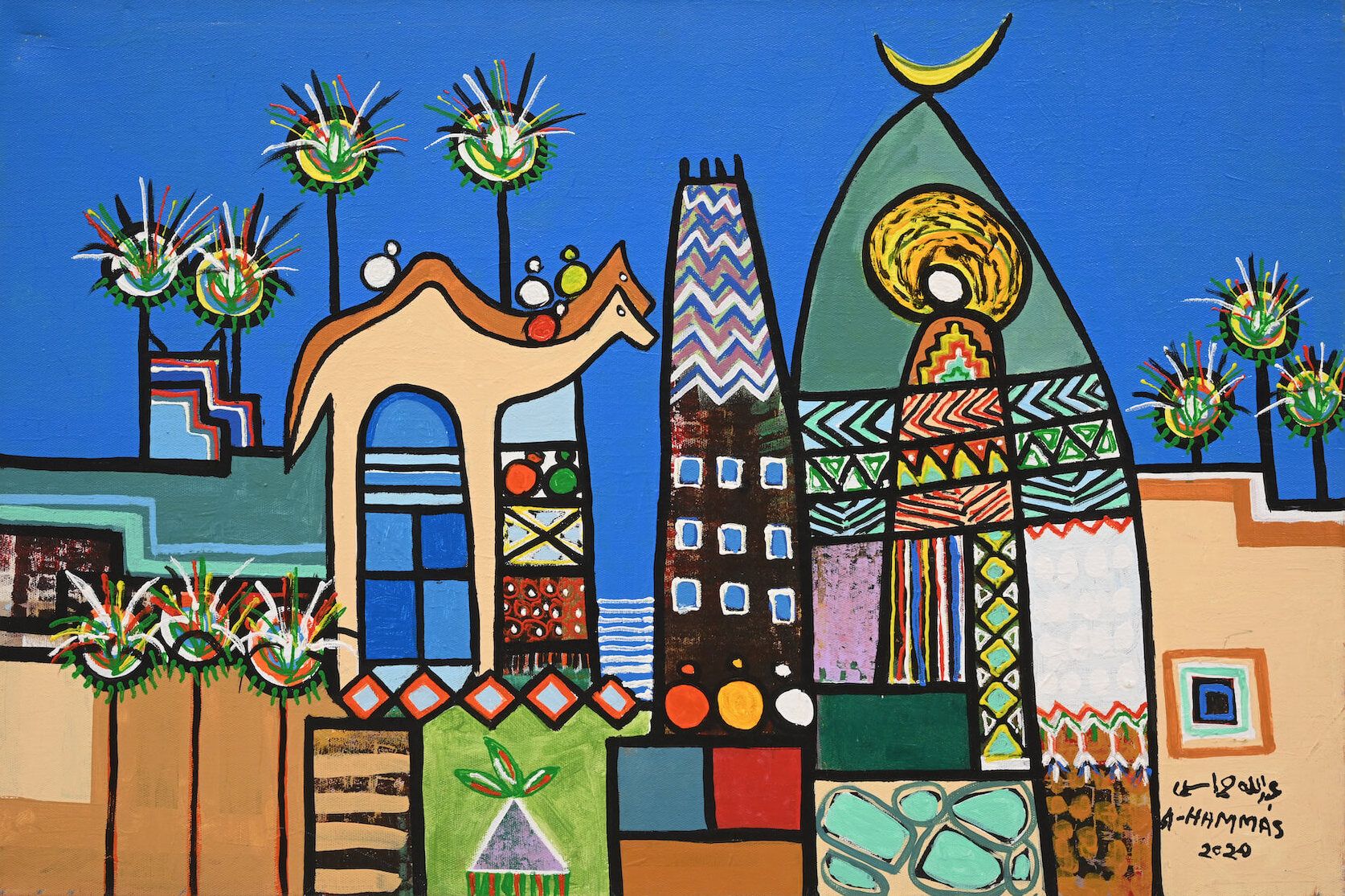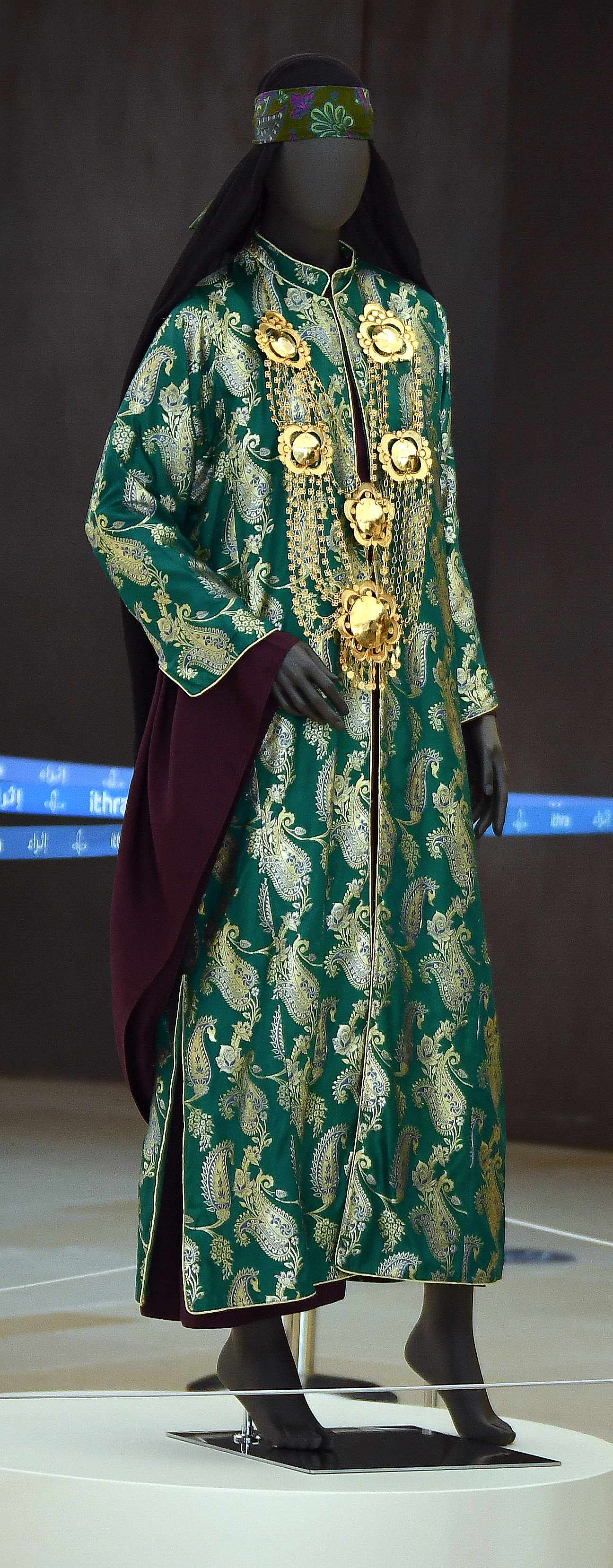The Art of Multiculturalism
Spirit of the Solstice by Maxine Noel
One of the most diverse and vibrant nations in the world, Canada’s legacy on the international scene is wide and historic, with it marking its 50-year relationship with Saudi Arabia — with it being restored this year following a five-year diplomatic break.
Canada is famous for its friendly citizens, cold winters, and for its natural sites, such as Niagara Falls, the kaleidoscopic Northern Lights, its national parks, and the Canadian Rockies. It is home to dynamic indigenous communities that bring a rich culture of traditions, art, and a unique way of life. And who could forget Canada’s iconic animals like the grizzly bears, loon birds and caribou.
Historically, Canada’s name has an aboriginal origin. It is said that the name “Canada” likely comes from the Huron-Iroquois word “kanata,” meaning “village” or “settlement.” Hundreds of years ago, around 1535, two Aboriginal youths told French explorer Jacques Cartier about the route to ‘kanata,’ referring to the village of Stadacona, the site of the present-day City of Québec.
Cartier then goes on to use the word “Canada” — his take on Kanata — perhaps mainly due to the lack of any other description, to describe not only the village but the entire area controlled by its chief, Donnacona.
The rest, as they say, is history, with the larger part of the country being called Canada, and then it becoming officially that after almost a dozen possible name candidates such as Tuponia, Victorialand, Hochelaga, and Cabotia.
We have the honor to interview Jean-Philippe Linteau, Ambassador of Canada to the Kingdom of Saudi Arabia and the Republic of Yemen, and Ambassador to the Kingdom of Bahrain and the Sultanate of Oman, to learn more about the relationship between Saudi Arabia and Canada and any upcoming plans.
We also pay homage to a timeless, beautiful poetic collection of art by featuring the first-ever debut of Canadian indigenous art.
As Canada’s Ambassador to Saudi Arabia, my job is to build bridges between the people and institutions of Canada and our host country. As such, I have a special appreciation for the power that art has in connecting people through our shared values and humanity. Art has a unique ability to unite people from diverse backgrounds, from all corners of the world and from all walks of life, around the enjoyment and appreciation of creative expression, something that has no borders.
Canada is a truly multicultural country. It is a fascinating mosaic of diversity, whose layers include our rich Indigenous heritage, early French and English influences, as well as the unique cultures of people who have come to Canada from literally every corner of the world. That said, the diverse traditions, languages, and art of the Indigenous peoples of Canada are particularly important. With their strong ties to the nature around us, they are the foundation of our shared heritage and form an essential part of our national identity.
Since Canada and KSA restored full bilateral relations in May 2023, we have been in an exciting period of building bridges and identifying new opportunities for collaboration in Saudi Arabia, including in the arts and cultural space. We are working to identify and nurture new connections and partnerships that will allow for deeper linkages between Canadians and Saudis in the cultural arena. In particular, we intend to focus on showcasing female artists from both countries, given the importance of women’s empowerment for Canada and under Saudi Arabia’s Vision 2030.
Canada is known for its iconic sweet treats, like maple syrup and Tim Hortons’ donuts, but there are other examples that represent Canada’s more modern and multicultural reality. For example, “Peace by Chocolate” is a well-known and loved Canadian business that was established by a Syrian refugee family, the Hadhads, who moved to Canada from Syria in 2016. Canadians are very proud of this success story and of the fact that Canada has welcomed approximately 45,000 refugees from Syria since 2015.

Canadian Ambassador Jean-Philippe Linteau standing next to the Spirit of the Solstice by Maxine Noel.
One of my favorite pieces of art in our Embassy’s collection is called “Spirit of the Solstice” by Maxine Noel. I love this piece because it features a strong, female presence while also embodying the artist’s Sioux heritage and reflecting themes of nature and spirituality. Maxine Noel is a Canadian First Nations artist of Santee and Oglala heritage. She is a survivor of Canada’s residential school system, which is a dark chapter in Canada’s past that caused multi-generational harm to Indigenous people, their families, and communities. Canada has been through an official process of Truth and Reconciliation related to this issue, and the Canadian government is now working to advance reconciliation with Indigenous peoples based on recognition of rights, respect, cooperation and partnership. For my part, I believe it is important to highlight the artistic contributions of residential school survivors as a testimony to their experiences and to foster greater understanding and appreciation of their culture, which is something that the residential school system wrongly sought to erase.
She is renowned for her artistic contributions that depict the vibrancy of Arctic landscape and the cultural heritage of the Inuit people. "Birds Startled by Spirit" reflects her signature style, which emphasizes the delicate balance between the unique natural environment in the Arctic and the spiritual world. Through her intricate portrayals of Arctic wildlife, she communicates the deep-rooted connection that the Inuit people have with their surroundings and for the beauty and life within the northern landscapes. The arctic is a world apart from what we see out our window in Saudi Arabia, but I enjoy seeing this piece and being reminded of the beautiful and fragile landscapes of Canada’s north.

“Birds Startled by Spirit” by Lucy Qinnuayuak (Inuit, 1915–1982).
I love the motto "diversity is our strength,’ because Canada's strength truly lies in our inclusivity. Diversity is a fundamental value of Canada, which also guides our outlook on the world and how we interact with our partners on the global stage. Respect for diversity is also a foundational value for me personally, and it shapes all of my interactions with my friends, colleagues, and contacts.
I arrived in Saudi Arabia in July, and so far, I have visited Eastern Province and Jeddah, but look forward to traveling all over the Kingdom, especially now that the weather is getting cooler. All of my experiences outside of Riyadh have been wonderful, and I have been touched by the warmth and hospitality of the Saudi people everywhere I have been. I particularly enjoyed riding the train back from Dammam to Riyadh and watching the ever-changing scenery and herds of camels from my window. I look forward to exploring more of this beautiful country over the coming months.
There are so many artistic talents in Canada, from a wide diversity of backgrounds; that it’s hard to know where to begin answering this question! Historically, some of our most celebrated and influential painters were from the “Group of Seven” (Franklin Carmichael, Lawren Harris, A.Y. Jackson, Franz Johnston, Arthur Lismer, J.E.H. MacDonald , and F.H. Varley) who developed a unique style of painting in the early 20th century that captured the Canadian landscapes and put Canadian art on the map internationally. We also have a wealth of artistic talent from the indigenous community, including artists like Norval Morriseau and Kenojuak Ashevak, who have created works of art that are renowned the world over. I would encourage you to have a look at the X account @CanadianPaintings, which is a wonderful showcase of Canada’s unique and diverse contributions to the artistic world.
In terms of global cultural ambassadors of Canada, I also would like to mention Cirque du Soleil, the iconic Canadian performance troupe that has brought Canadian creativity and innovation all over the world, including to Saudi Arabia. There are several other groups, also originally from Quebec, which are bringing cutting-edge performance art to the global stage, including “Les 7 Doigts”, which we hope will come to the Kingdom in the near future.
such as the wide collection of Canadian art at The National Gallery of Canada, the Royal Ontario Museum, and many others, as well as one of the best magazines on the nation's history known as Canada’s History.

"The Archer" by the Inuit Indigenous artist Niviaksiak (1908 - 1959).

“Canada Geese” (1959) by the Indigenous printmaker Kellypalik Mungitok (1940-2014). Mungitok was just seventeen when he became involved in the first graphics experiments in Cape Dorset. He is credited as the creator of five early prints, followed by another five in the inaugural 1959 collection, including the present Canada Geese.


